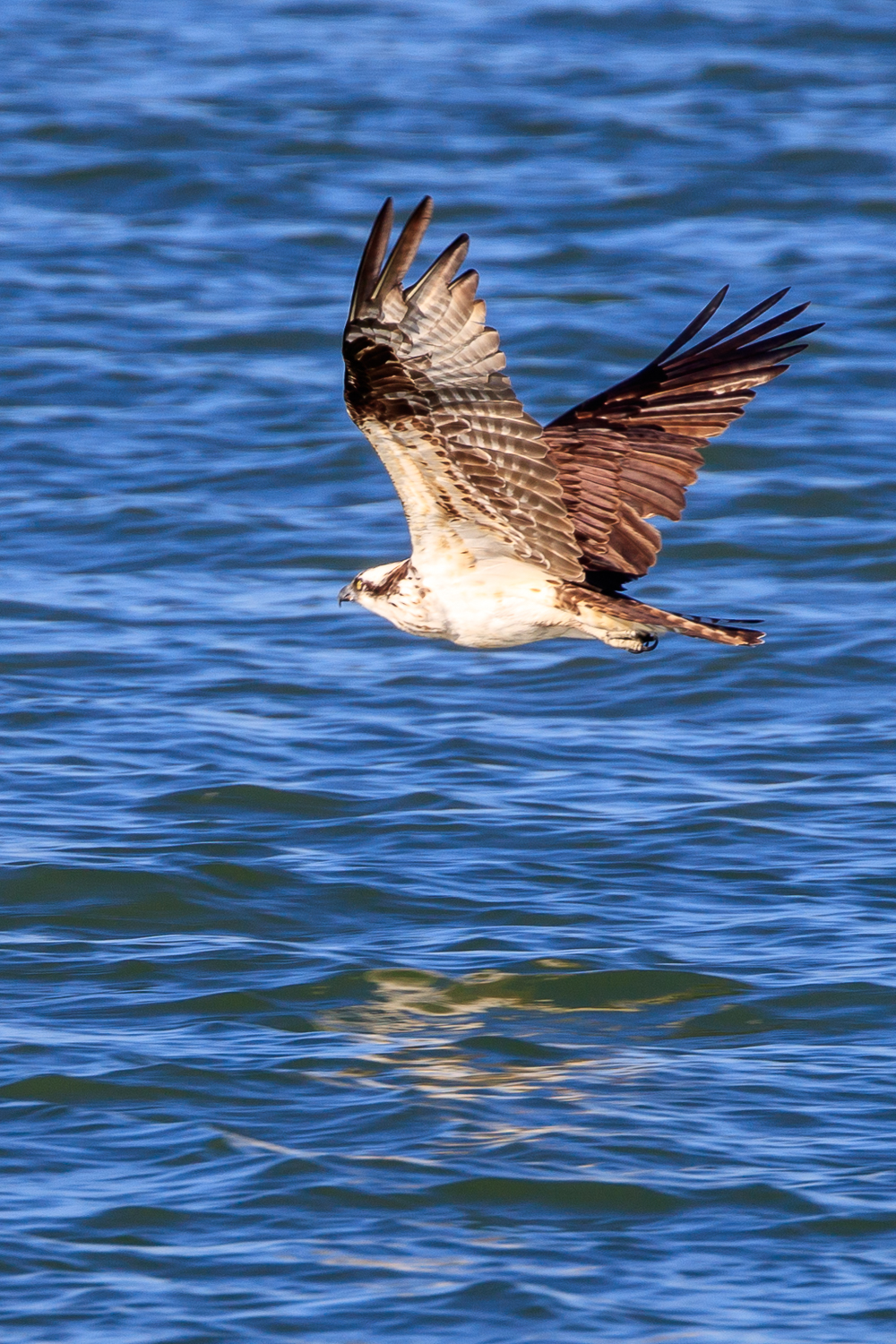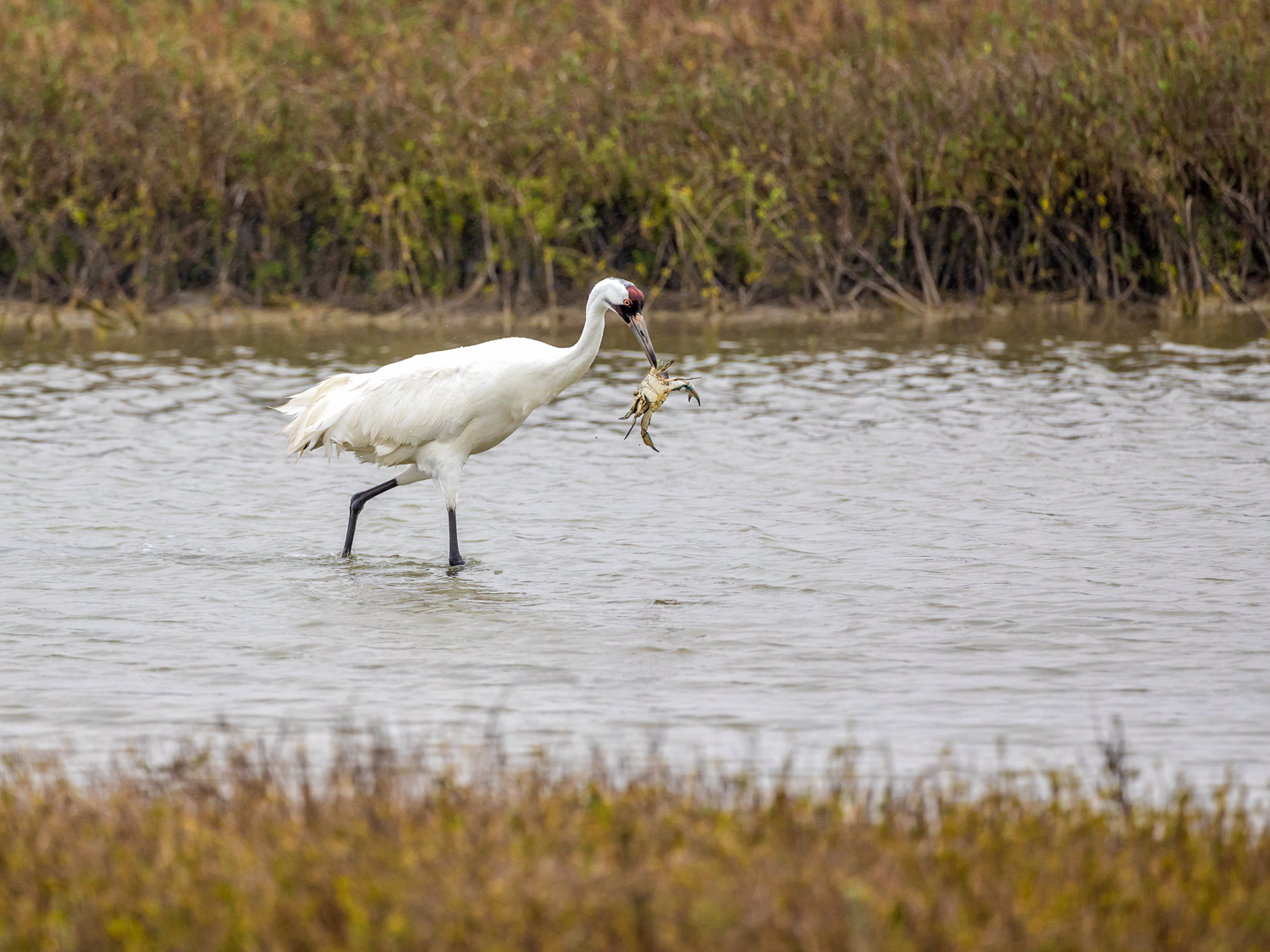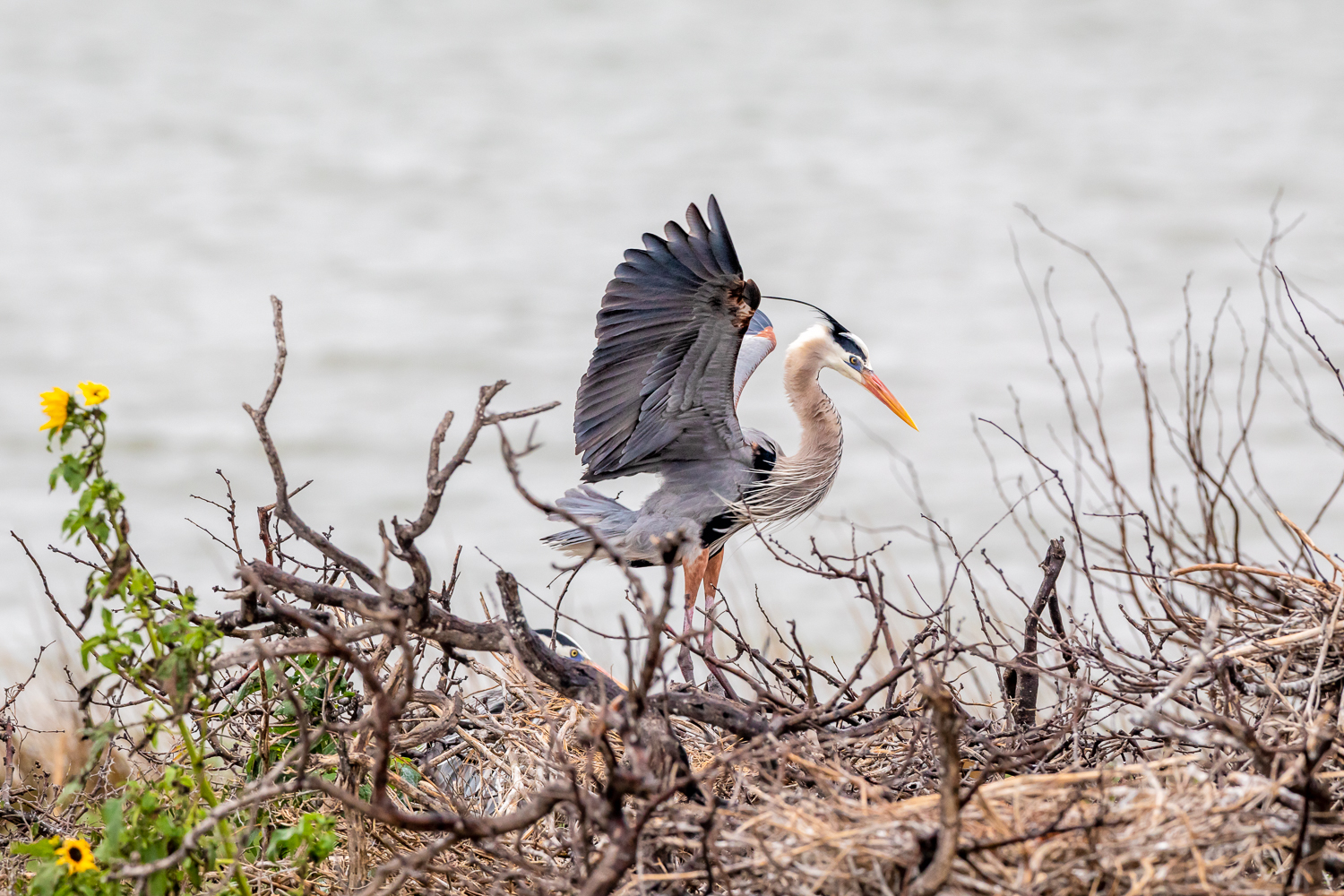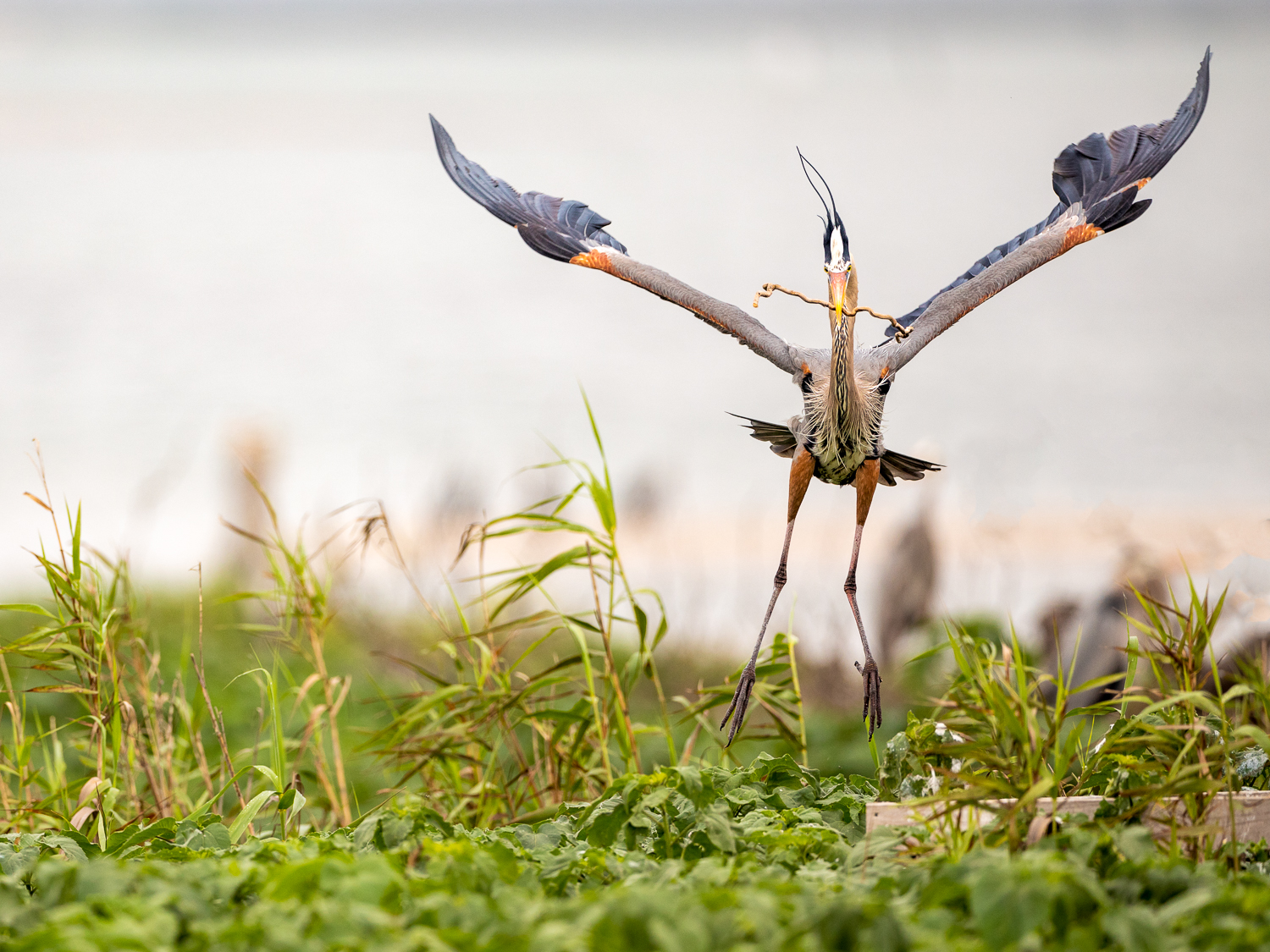I had never photographed an Osprey before and I can tell you that these birds don’t like to be photographed. At least not while the photographer is on a boat. We kept seeing this marvelous bird when photographing birds at the Aransas National Wildlife Refuge back in February aboard our charter boat, the Jack Flash. Every time we saw it and tried to stealthily drift towards it, it flew away to another perch. It was hard to get a good photograph even with our long lenses. I was lucky to get the image below.
An Osprey may log more than 160,000 migration miles during its 15-to-20-year lifetime. During 13 days in 2008, a transmitter-tracked Osprey flew 2,700 miles from Massachusetts to French Guiana. They also have a reversible outer toe that allows them to grasp with two toes in front and two behind. Barbed pads on the soles of the birds’ feet help them grip slippery fish. When flying with prey, an Osprey lines up its catch head first for less wind resistance. Osprey are excellent anglers. Their success rate can be as high as 70 percent and they spend about 12 minutes hunting before making a catch. These birds are awesome creatures.

This image was taken with my Canon EOS 5DS using my Canon EF 100-400mm f/4.5-5.6 II Lens set on 400 mm. The camera was set on Aperture priority mode with the aperture set at f/5.6, shutter speed at 1/500th of a second and the ISO set at 100. I could have taken a better photograph if I had set my camera on manual mode and set the aperture to f/8, my shutter to 1/1250th of a second (or higher) and the ISO at about 800. Learning through experience. This was a single image processed in Lightroom.
You can view my Birds of Texas collection by clicking here. Please use the section below to post your comments, questions, or suggestions.


